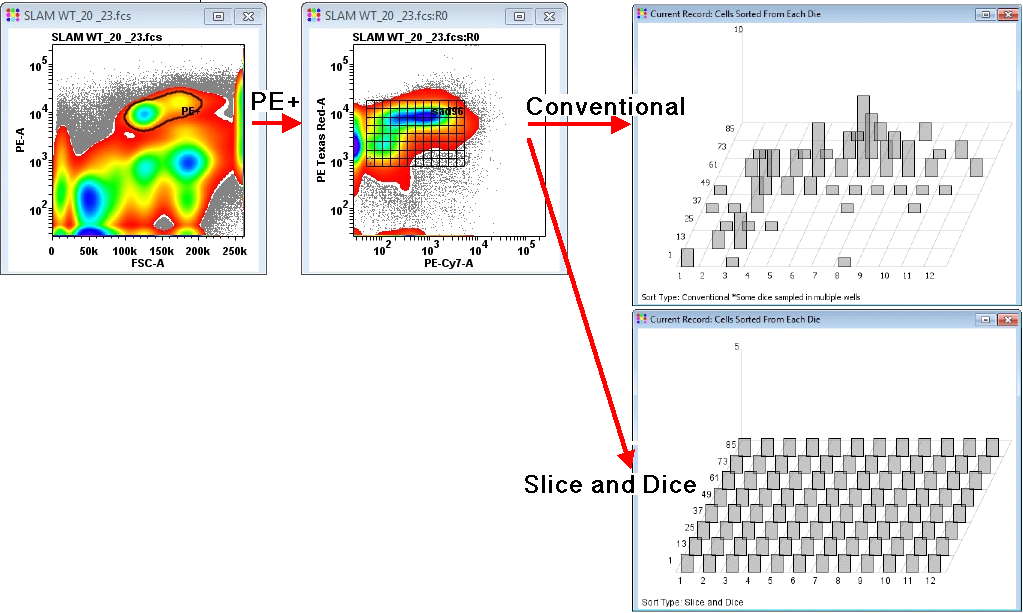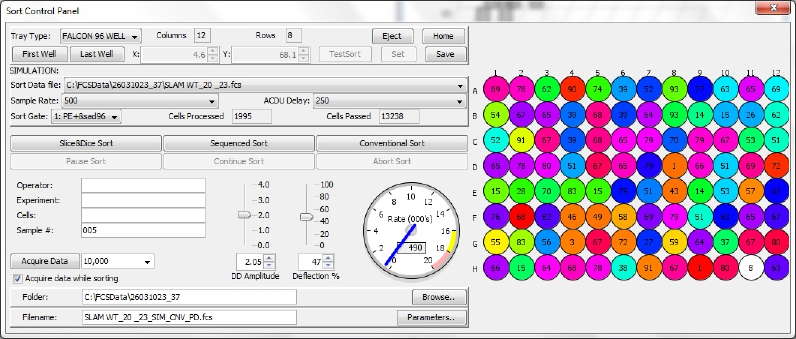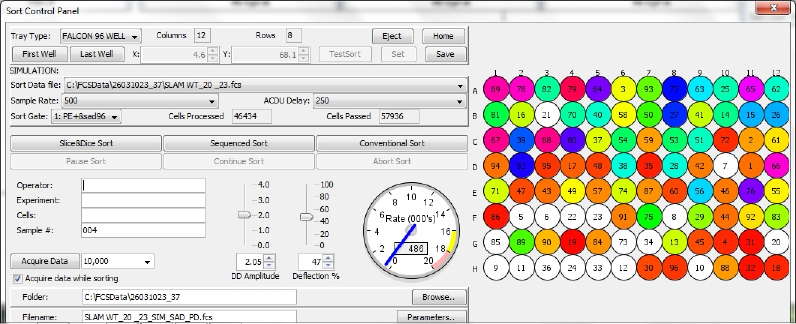
Flow Cytometry Software
Frank Battye - Flow Cytometry Consulting
Slice and Dice Sorting: The Method
The Dicer slice and dice cell sorter allows delineation of the cell population of interest as in conventional single cell sorting. This can include creation of regions to select viable cells with certain fluorescence criteria, with those regions then combined to define a gate. In slice and dice sorting, the final region is a rectangle, surrounding the population to be sorted, that is sliced and diced into an array of "dice" that matches the well array of the microtitre plate into which the cells are to be sorted. In slice and dice sorting, no more than one cell may be sorted from any die.
The following graphic illustrates an example experiment. Dicer collects information on the source die of each sorted cell, thus enabling the 3D display of the number of single cells sorted from each die location. For a conventional sort, the cells selected for sorting will be predominantly from the denser areas of the population, as reflected in the 3D histogram. Slice and dice sorting ensures that cells are selected from all locations within the region.

Another way of looking at that is from the point of view of the plate wells. The Dicer Sort Control Panel displays the microtitre well array with indication of the source die locations of the cells sorted into each well. The wells are also colour coded to indicate the local density of cells at those die locations as shown in the heat map display of the final sort population.

Following the sort, the colour coding of the wells reflects the colour at each source die location of the sorted cell as shown in the heat map of the cell data display. The conventionally sorted cells come predominantly from high density areas so very few white coloured wells appear.

Slice and Dice sorted cells are sourced from every location of the final sort region, thus maximally sampling the diversity of the population.
Return to Slice and Dice Home..
Return to Frank Battye: Flow Cytometry Consulting..